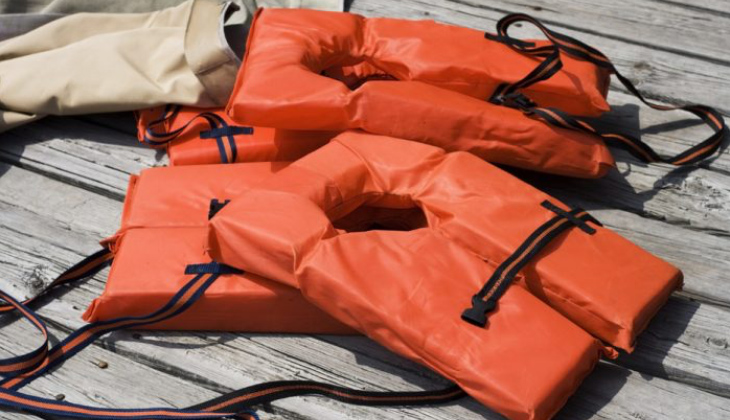Would your lifejacket pass the test?
Catherine Gooderham, 1st March 2018, Boat
It's one thing to have lifejackets on board your boat, but would they work if you actually needed them? Below we look at some key issues concerning the maintenance and use of lifejackets.

Most lifejacket manufacturers recommend that lifejackets are serviced annually by an approved service company. However, in between services there are things you can do yourself to help maintain your jacket and get the best use from it. It is important to understand what sort of lifejacket you have and how it works. Also familiarise yourself with features of the lifejacket that could prove vital if you were to fall overboard, such as lights and whistles. The most popular lifejackets bought by UK boaters are gas-inflation jackets, which either inflate manually via a pull cord or automatically when activated by water or pressure.
Inspections
Regularly inspect your lifejacket for any damage to fabric, stitching, straps and fastenings. Open up your lifejacket and check that the bladder is air tight. To do this, inflate the bladder manually and then leave it for at least 12 hours to see if it remains fully inflated. If it does not, the jacket must be replaced. Check that the CO2 gas bottle attached to the bladder has not been activated and is not corroded. Check the condition of and expiry dates for automatic firing mechanisms, which vary by type of jacket, and renew if out of date.
How to wear your lifejacket
Of course, to have any chance of being saved by a lifejacket you have to wear it! A surprising number of boaters don't. And always do up and tighten the crotch strap, or the jacket will sit too high-or even go over your head-if you end up in the water. Children must always wear a lifejacket that's the right size for them; it is not wise to buy something with "room for growth". Self-inflating jackets are not suitable for very young children; they should wear foam-filled jackets that provide instant buoyancy. Lifejackets are also available for dogs, and even cats. They generally feature a grab handle for lifting your pet on and off a boat or out of the water.
Storage
Lifejackets should be stored somewhere dry and well ventilated. If your lifejacket becomes damp during use, hang it up to dry before storing.
Important
Lifejacket safety is not to be taken lightly. For further reading on lifejacket maintenance, and sailing safety please visit the RNLI website. Make sure, before you take to the water, that you have everything necessary to keep you safe.
All lifejackets are different so it is important that you take the time to learn how to use yours correctly. The information above may not be applicable to your type of lifejacket, therefore you must make sure to research how is best to maintain your own lifejacket.
Related articles
Monthly Newsletter
Not signed up to our monthly newsletters and would like to keep up to date with a variety of products? Select from below which products you would like to receive.
No Product! Please select a product